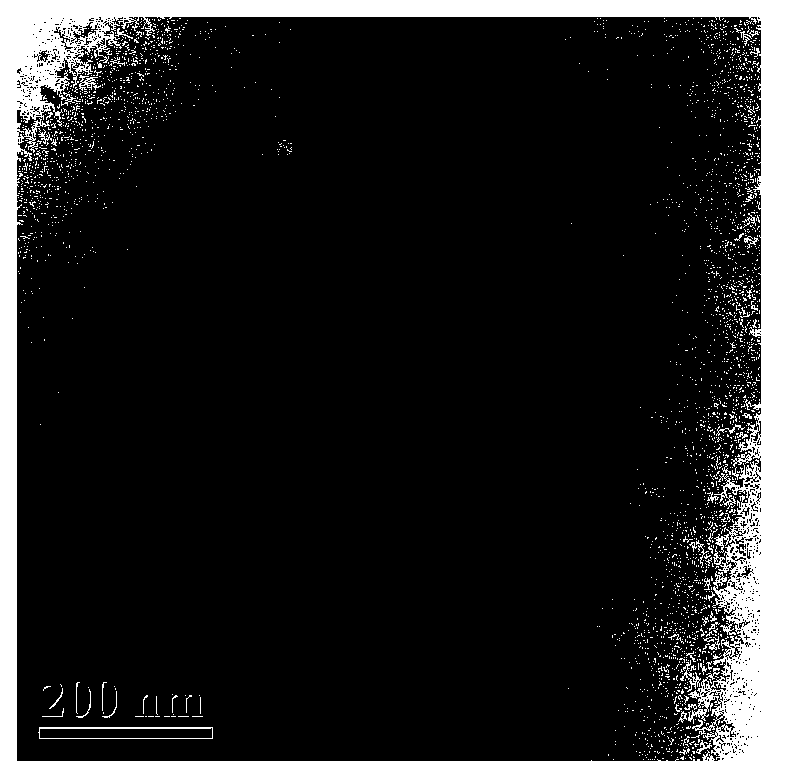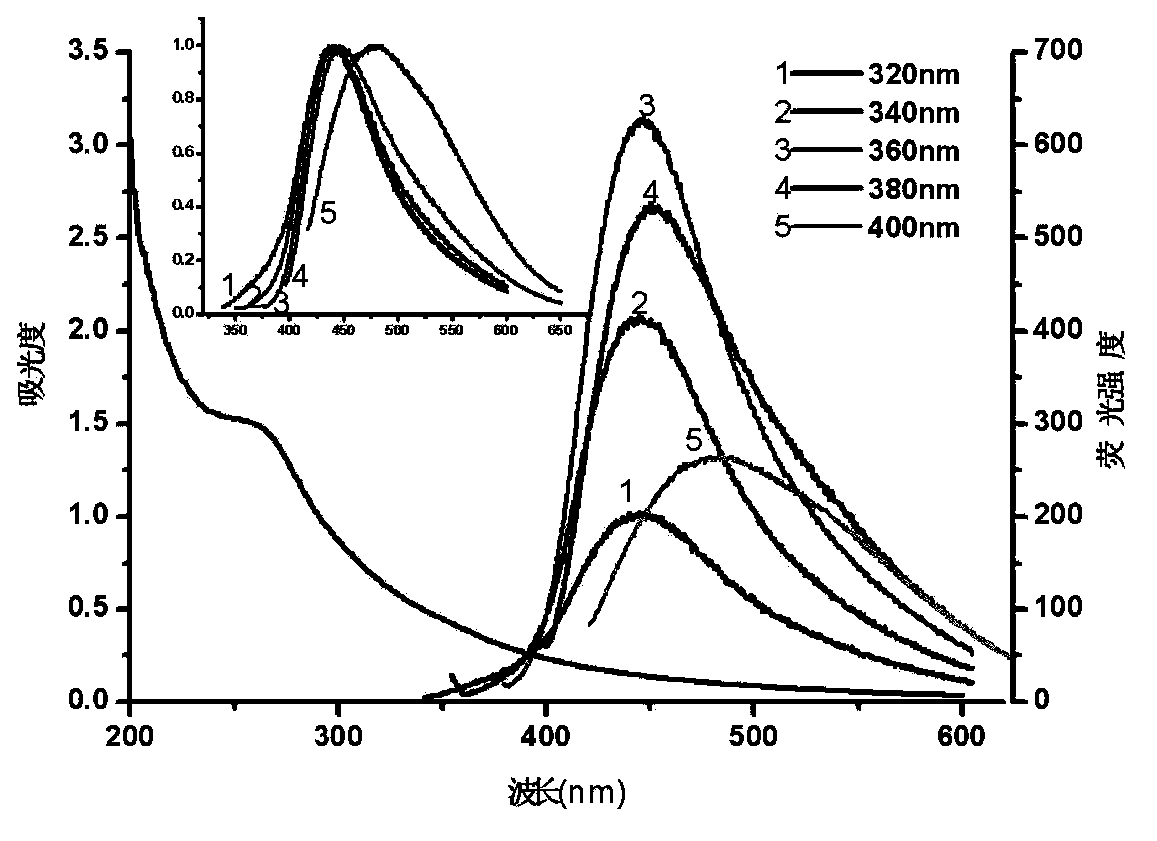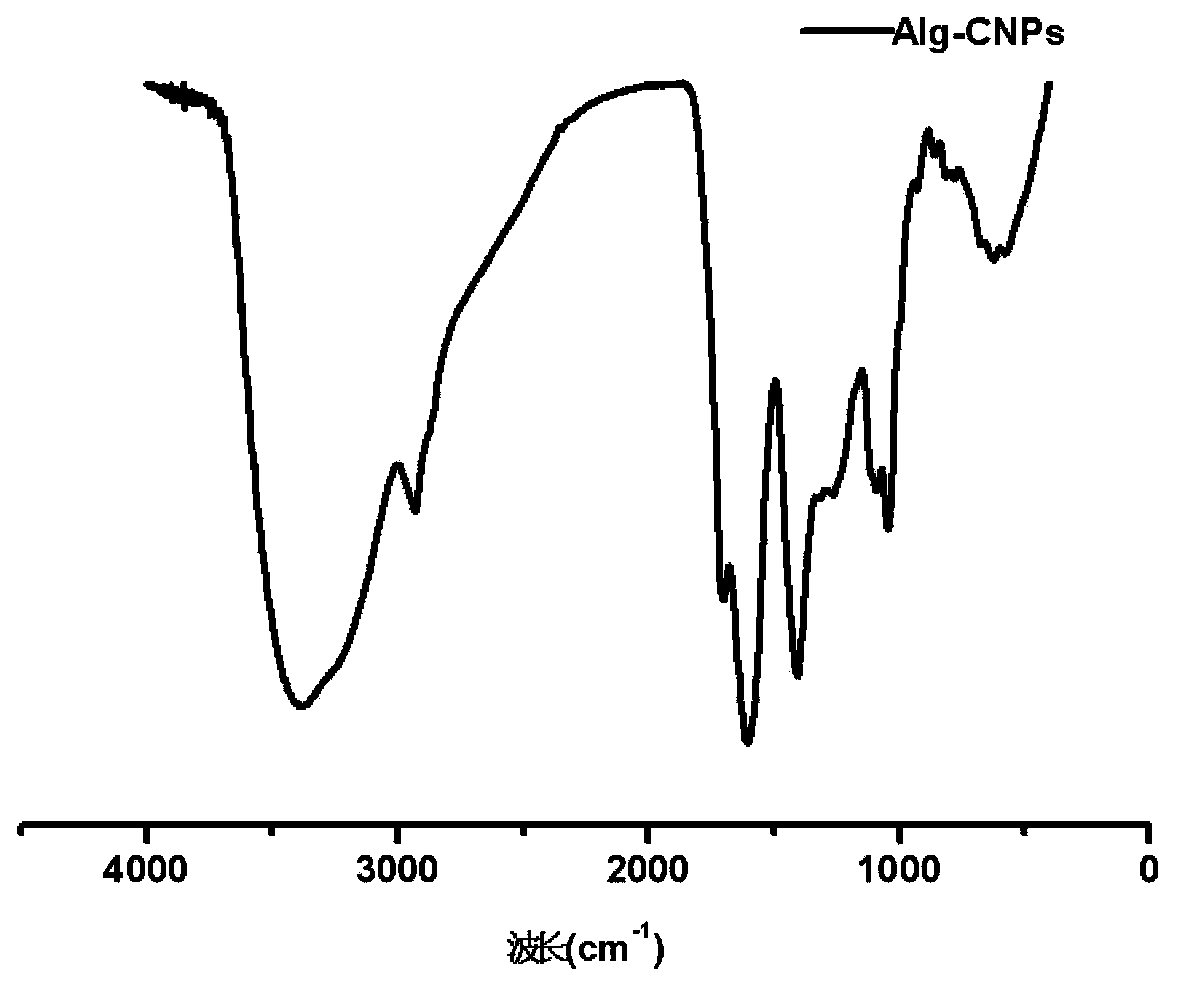Functional carbon nanoparticles and application thereof
A carbon nanoparticle and functional technology, applied in the field of nano-fluorescent materials, can solve the problems of difficult separation of carbon nanoparticle, complicated preparation process and not enough extensiveness, etc. Effect
- Summary
- Abstract
- Description
- Claims
- Application Information
AI Technical Summary
Problems solved by technology
Method used
Image
Examples
Embodiment 1
[0026] Example 1: Preparation and separation and purification of carbon nanoparticles
[0027] (1) Preparation of Alg-CNPs:
[0028] Weigh 1g of sodium alginate and 0.1g of NaOH into a beaker, and add 30ml of deionized water. Then the reactants were placed in an autoclave for 4 hours at a temperature of 160 degrees Celsius. After cooling at room temperature, the pH of the reaction product was adjusted to 7 with 1M HCl.
[0029] (2) Separation and purification of Alg-CNPs:
[0030] The resulting product solution was treated with 0.45 μm and 0.22 μm microfiltration membranes to remove macromolecular impurities. Then use a high-speed desktop refrigerated centrifuge (10000rpm) to centrifuge for 20 minutes, and then use a dialysis bag (500Da) to remove small molecules such as salt. The dialysis time is 2 days (change the water every 2 hours).
Embodiment 2
[0031] Example 2: Characterization of Carbon Nanoparticle Properties
[0032] (1) Transmission electron microscope characterization of carbon nanoparticles:
[0033] Depend on figure 1 It can be seen that the particle size of sodium alginate carbon nanoparticles is about 100nm, and the particle size distribution is relatively uniform, and the monodispersity is good.
[0034] (2) UV absorption spectrum and fluorescence spectrum of carbon nanoparticles
[0035] figure 2 It is the ultraviolet absorption spectrum and fluorescence spectrum of alg-CNPs after reduction. It can be seen from the figure that carbon nanoparticles have an absorption peak at 260nm, which is a typical peak of C=C. Under the action of excitation light of different wavelengths (320nm-420nm), carbon nanoparticles emit different wavelengths of light, mainly concentrated in the visible light range. As the excitation wavelength increases, the emission wavelength is red-shifted.
[0036] (3) Fourier transfor...
Embodiment 3
[0040] Example 3: Sodium borohydride treatment improves the fluorescence quantum yield of carbon nanoparticles
[0041] (1) Sodium borohydride treatment
[0042] Put 15ml of carbon nanoparticles into a beaker, add 1.5g of sodium borohydride and mix well, then use dialysis to remove excess sodium borohydride (500Da), and the dialysis time is 2 days (change the water every 2h).
[0043] (2) Fluorescence quantum yield of carbon nanoparticles after sodium borohydride treatment
[0044] It can be concluded from Table 1 that the quantum yield of the synthesized carbon nanoparticles is greatly improved after sodium borohydride reduction.
[0045] (3) Effect of pH value on the fluorescence properties of carbon nanoparticles
[0046] Take 0.5ml of alg-CNPs samples, add 4.5ml of deionized water, and adjust the pH to 3, 5, 7, 9, 11, 13 with 5M HCl and 5M NaOH to do three parallel experiments. Figure 5 is the effect of pH value on the fluorescence characteristics of carbon nanoparticl...
PUM
| Property | Measurement | Unit |
|---|---|---|
| particle diameter | aaaaa | aaaaa |
Abstract
Description
Claims
Application Information
 Login to View More
Login to View More - R&D
- Intellectual Property
- Life Sciences
- Materials
- Tech Scout
- Unparalleled Data Quality
- Higher Quality Content
- 60% Fewer Hallucinations
Browse by: Latest US Patents, China's latest patents, Technical Efficacy Thesaurus, Application Domain, Technology Topic, Popular Technical Reports.
© 2025 PatSnap. All rights reserved.Legal|Privacy policy|Modern Slavery Act Transparency Statement|Sitemap|About US| Contact US: help@patsnap.com



